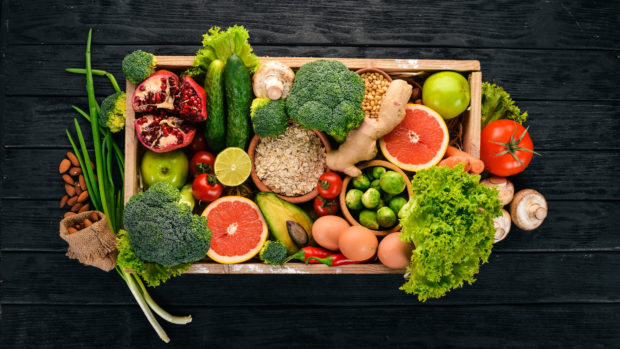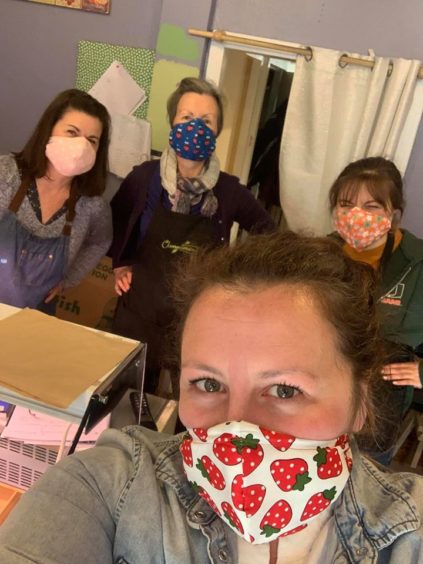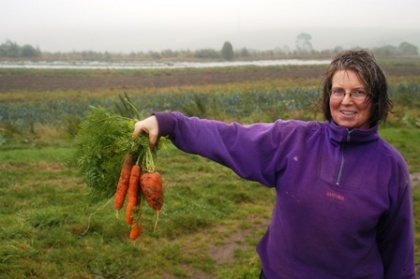Independent food suppliers tell Nadia Vidinova about the boom in popularity of vegetable boxes.
Up until around two months ago a vegetable box delivery from a local greengrocer’s would have been a fairly niche service, usually the domain of trendy “foodies” or eco-warriors keen to reduce their food’s carbon footprint.
Since lockdown made going to the supermarket a bit of an ordeal, however, the popularity of the humble veg box has exploded among the general population.
New data from food policy organisations Food Foundation, the Banc CSA Network UK and Better Food Traders shows that sales of vegetable boxes have increased by a huge 111% in the six weeks between the end of February 2020 and mid-April 2020.
A survey of 101 veg box schemes across the UK shows weekly sales have more than doubled as a result of the coronavirus pandemic, with 82% of box schemes now having to implement waiting lists averaging 160 customers each and 65% prioritising key workers, the vulnerable and those self-isolating.
With an estimated 500 such schemes operating in the UK pre-COVID-19, a total of 3.5 million boxes are likely to have been delivered to households since the beginning of March, but if waiting lists could be met, 5.3 million boxes could be supplied over the next six weeks, according to the figures.
The highest rates of growth were seen by smaller box schemes supplying up to 300 boxes per week, who grew sales by as much as 134%.
One such business is greengrocer Clementine’s in Dundee, which delivers boxes throughout the city as well as nearby Newport, Tayport, Arbroath and Carnoustie, and has increased its sales of vegetable boxes from six a week to 60-70 a day during lockdown.
“In the space of around 48 hours we went from 0 to a 100”, said owner Cheryle Sexton.
“I’d just taken over Clementine’s at the tail end of last year and we were getting the shop up and running, and then coronavirus happened. We had to close and switch to doing fruit and vegetable box deliveries only, whereas before that deliveries were a tiny part of our business.
“It’s been a very, very busy time, there are only three of us and a Saturday girl, so it’s been all hands on deck. The girls have all been working extra hours and I’m working into the evening sorting orders too. Usually the beginning and end of the week are our busiest times, but on the quietest mid-week days we do a minimum of 50 deliveries.
“At the start of the lockdown, when things were a bit overwhelming we were prioritising vulnerable people who needed deliveries the most, but now we’re better placed to meet the demand from everybody. I’ve brought in three delivery drivers and around two weeks ago we got a website and app up and running, so now we can take online orders. Most orders can be delivered same-day, or if placed later in the afternoon it would be a next-day delivery.
“We build our boxes based on seasonality and what we have in the shop that day, but if there are specific things they want or don’t want, we’ll try to cater to that. The feedback has been good, customers are saying they like the surprise element – for example, people might not normally buy, say, an aubergine, but if it’s in the box they’re looking up new recipes for how to use it.
At the start of the lockdown, when things were a bit overwhelming we were prioritising vulnerable people who needed deliveries the most, but now we’re better placed to meet the demand from everybody.”
Cheryle Sexton of Clementine’s
“I think even after lockdown there will still be a demand for the fruit and vegetable box deliveries as not everyone can always come to the shop and we’ll absolutely keep them on.”
Meanwhile in Inverurie, organic fruit and vegetable box delivery company Vital Veg has seen a doubling in demand for its service – but has struggled to keep up due to a long “hungry gap” and currently has a waiting list of more than 300 customers.
“The hungry gap is the period between when last year’s vegetables are all sold and eaten, and this year’s still haven’t grown.”
In Scotland this period is usually from May until July, so the virus has coincided with that.
“Also this year there’s been increased awareness of climate change and reducing the carbon footprint, meaning that we’ve had lots more demand than usual as people want to get organic produce locally. This has made the hungry gap even longer because our produce, most of which we grow on our farm, was all bought up earlier in the year.
“We’re now having to have produce delivered from elsewhere in the UK, but because of the pandemic there are fewer pickers and fewer delivery drivers working, the supply chain is disrupted and as a result produce is more expensive. So we’ve had to put our prices up too, which we hope to reverse when we’re back to normal.
“At the moment some weeks we’re barely making any profit margin at all, and I know that other independent fruit and vegetable businesses in the are in the same boat. People should be aware of just how fragile our food supply system is.
“It has been stressful and we’re all working longer and harder, there are seven of us in total. We’ve been operating a fruit and vegetable box delivery service since 2004, mainly in the Aberdeen, Banchory and Inverurie, the demand for that has now doubled and we’re delivering up to 90 boxes a day with our two vans, from Monday until Thursday.
“People can choose what items they want or they can have us select them, it’s a mixture. Carrots and beetroot are always popular products but people usually like a mix in their boxes.
People should be aware of just how fragile our food supply system is.”
Wendy Seel of Vital Veg
“Previously people have also had the option to come and collect their boxes in person but we’ve limited that, and we’ve also swapped our returnable cardboard boxes to single use bags for the time-being, to reduce the risk of infection. Although things are hard right now we’re surviving and we’ll keep going as best as we can.”
Some veg box scheme businesses are calling for government support in the form of small grants so they can scale up to meet demand, including increasing staffing levels, improving infrastructure such as polytunnels, delivery vehicles, cold stores and packing houses, as well as buying PPE.
Jo Hunt of Knockfarrel Produce, a small croft business in Dingwall supplying the Highlands, said: “We run a successful, fully subscribed veg box scheme with 85% of produce grown on our own farm, and 150 customers in remote rural areas.
“But we, the two farmers, are self-employed and earn only £3.20 an hour for our work. This is one third of the living wage, and we rely on benefits to top up our wages.
“The reasons behind this are many: small farm size, low food prices for imports, no farm subsidies, supermarket discounting and price competition, no charges for pollution in food production and transport, etc.
“Why are ‘key workers’ like us earning a third of the minimum wage? This income inequality needs to be addressed urgently. And until it is, very few farmers will want to move into local food production and increase the supply to meet rapidly rising demand.”
The Department for Environment, Food and Rural Affairs’ analysis of farm business income from 2014 to 2017 shows that government subsidy accounted for 10% of the income of horticulture holdings, versus 79% for cereal producers.
Anna Taylor, Executive Director of the Food Foundation, said: “In a time of national crisis, fruit and veg producers running box schemes have provided a critical service to their customers and communities: we must ensure our agriculture policy, now and in the future, helps them get the investment they need as they play a vital role in supporting access to healthy produce as part of a sustainable food and farming system.”


